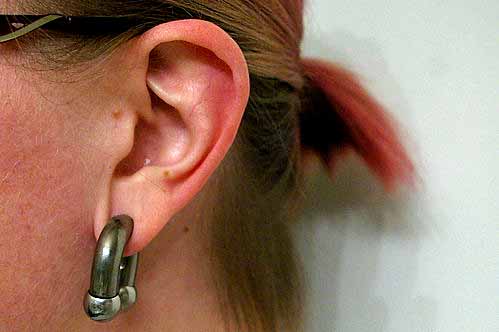Luckily, there are a variety of software programs available that can fill in any gaps in your knowledge as far as ear training is concerned. The most important thing to consider is your own skill level and comfort with music notation and theory. If you’ve never studied this side of music before, a more comprehensive program might suit your needs best, while a more advanced player could be looking for a simpler program, mostly for practice.
Whatever your level, one of the programs below is likely to work for you. Based on our reviews, we consider these the best ear training software on the market.
EarMaster Pro 6
EarMaster is a program that helps you work on both ear training and sight singing skills. It’s a practical music theory course that’s in use by several professional music education institutions, and is suitable for players of any instrument and level. It includes over 2,000 exercises that work on identifying pitches, chords, and rhythms, both by sight and sound.
Though the main focus is on basic music theory, there is a jazz course that gets into some harmonies more common in popular music. The program (see full specs) gives you detailed statistics of your progress, which you can then use to create a customized practice plan to target and improve your weak spots. It also has MIDI capability, so you can play along and get feedback in real time.
Music Ace Deluxe
If you’re starting from scratch and are new to even the basic concepts of music theory, it can be frustrating to use many ear training courses, which tend to assume a baseline knowledge of terminology and concepts. The Music Ace series of software is designed for people who are completely new to the study of music theory.
Its 36 comprehensive lessons (see full specs) will teach you everything you need to know to take your music studies to the next level, whether your goal is to be able to write lead sheets from tunes or just to hear the chords better when you’re playing with your band. It also has some other nifty features for musicians, like a Doodle Pad that lets you try out your own compositions. It’s among the best ear training software you can buy.
eMedia Music Theory Tutor
The eMedia Music Theory Tutor course is designed to give you a college-level theory course in a convenient and accessible piece of software. It has a somewhat revolutionary interactive practice engine that tracks your projects and automatically tailors future lessons to address the places where you’re weakest.
It starts with fairly basic concepts, like basic tonality, rhythmic patterns, and chord and melody identification, eventually working up to more advanced concepts like chord progressions and formal analysis. If you feel you have a good grasp on the basics of music theory but want to dig into the details and hone your ear, the various ear training and sight singing exercises included in this program will take your knowledge to the next level.
Amazing Slow Downer
While all of the programs above can be very helpful in teaching you how to train your ear to identify intervals, chords, and rhythms, there is no substitute for practice when it comes to putting these skills into action. Transcribing your favorite musicians is one of the best ways to practice your ear training skills once you’ve mastered the basics, and for that, you’ll want a program like the Amazing Slow Downer.
Where the Slow Downer differs from other audio playback programs is that it keeps the pitch constant even when you change the speed, giving you more time to catch every note in a fast lick or tricky chord. By getting the Amazing Slow Downer app you’ll have this program at your fingertips every time you’re practicing, letting you work on your ear training anytime, anywhere.
Benefits of the Best Ear Training Software
There have traditionally been two ways that musicians develop their ear training: either by taking a course or lessons with an established music teacher, or by self-teaching through studying recordings or playing with other musicians. Ear training software falls somewhere in between these two established approaches, and has many distinct advantages over both.
As compared to taking an aural skills class or working with an ear training tutor, the most obvious advantage of ear training software is the cost. Tutors often cost between ten and twenty dollars per hour, while classes can cost hundreds or even thousands of dollars, if taken at a university. Compared to that, the cost most of these software programs run is an incredible bargain.
The other advantage of software over an in-person course is that your learning can be completely self-paced. If your rhythm is solid but you have trouble identifying chords, you can spend more time on those lessons you actually need rather than wasting your time working on skills you’ve already developed. You can also work through the lessons when you have the time for them, as opposed to having to schedule the rest of your life around your ear training studies.
Many gigging musicians will tell you the best way to develop your ears is to immerse yourself in playing and listening to music, in the same way someone learning a foreign language is often advised to immerse themselves in a culture that uses the language they’re learning. While this is certainly the best way to hone and practice your ear training skills, the honest truth is that you don’t know what you don’t know. You may end up with large gaps in your knowledge simply because certain intervals, chords, or rhythms don’t come up often in the type of music that you play or listen to. An ear training app can help make sure your ear training skills are more balanced across all music. They can also track your progress and help you to identify your weaknesses—something that can be difficult to assess without an outside source to help you.
Don’t think that these approaches are mutually exclusive, either. Pairing the best ear training software with attentive listening or transcription practice can help reinforce your new skills and speed up your learning process. If there are places where you’re particularly struggling, you could schedule a few sessions with a tutor to hit just those trouble areas you’ve identified in your at-home practice. However you approach it, developing your aural skills is a great way to improve both your playing and your enjoyment of the music you listen to. Good luck!








